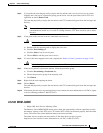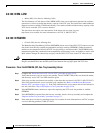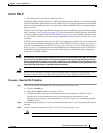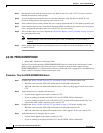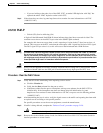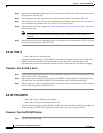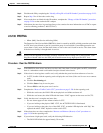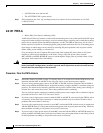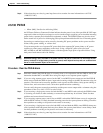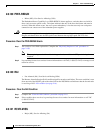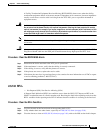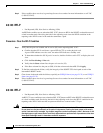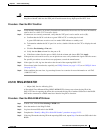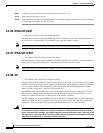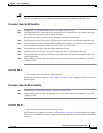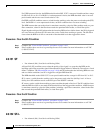
2-99
Cisco ONS 15327 Troubleshooting Guide, R3.4
March 2004
Chapter 2 Alarm Troubleshooting
Alarm Procedures
Step 6 If the alarm does not clear, log onto http://www.cisco.com/tac for more information or call TAC
(1-800-553-2447).
2.6.138 PWR-B
• Minor (MN), Non-Service Affecting (NSA)
An NE Power Failure at Connector B alarm indicates that the power is out of the specified 48 VDC input
range and is either too high (overvoltage) or too low (undervoltage), requiring you to check the incoming
power feed or separate power distribution equipment, or both. The PWR-B alarm may also be raised
before actual loss of power in a discharging power plant problem and before full loss of incoming power.
Overvoltage or undervoltage can be caused by incoming DC power problems such as power rectifier
failure, faulty power cabling, or a blown fuse.
Cisco encourages the use of separate DC power feeds from separate DC power plants or AC power
rectifiers to ensure power redundancy to the feeds. Using a single DC power source for both
MIC-A/PWR-A and MIC-B/PWR-B creates a risk through the single point of possible failure. Using
dual power feeds removes this risk liability.
Warning
Hazardous energy level available at the power source and power connection. Do not bridge across
battery terminals or bridge battery terminal to ground; metal objects heat up and can cause serious
burns or weld the metal object to the terminals.
Procedure: Clear the PWR-B Alarm
Step 1 Determine whether the PWR-B alarm is occurring alone or in conjunction with the PWR-A alarm, and
determine whether MIC A and MIC B are using one single or two separate power supplies.
Step 2 If you are using separate power sources for the MIC A and MIC B power connectors and the PWR-B
alarm occurs without the PWR-A alarm, inspect the incoming voltage to the MIC B connector using site
practices. The alarm can be caused by problems such as power rectifier failure, faulty power cabling, or
a blown fuse, and correct these issues. Solve these problems before continuing.
You can verify the power connection continuity and the power source output with a voltmeter using the
procedures in the Cisco ONS 15327 Procedure Guide.
Step 3 If you are using a single power source for both the MIC A and MIC B cards and only the PWR-B alarm
is occurring, an electrical cable continuity or connection problem may be to blame. Check for these
problems and correct them if necessary.
Step 4 If you are using separate power sources for each MIC card and the PWR-B alarm occurs in conjunction
with the PWR-A alarm, it is likely that both incoming power feeds or power plants are failing. Check for
these problems according to site practice and correct as necessary.
Step 5 If you are using a single power source for both MIC cards and both the PWR-A and PWR-B alarms are
raised, problems with both power feeds may be to blame, but a power plant failure is more likely. Check
for these problems according to site practice and correct as necessary.
Step 6 If the alarm does not clear, log onto http://www.cisco.com/tac for more information or call TAC
(1-800-553-2447).



